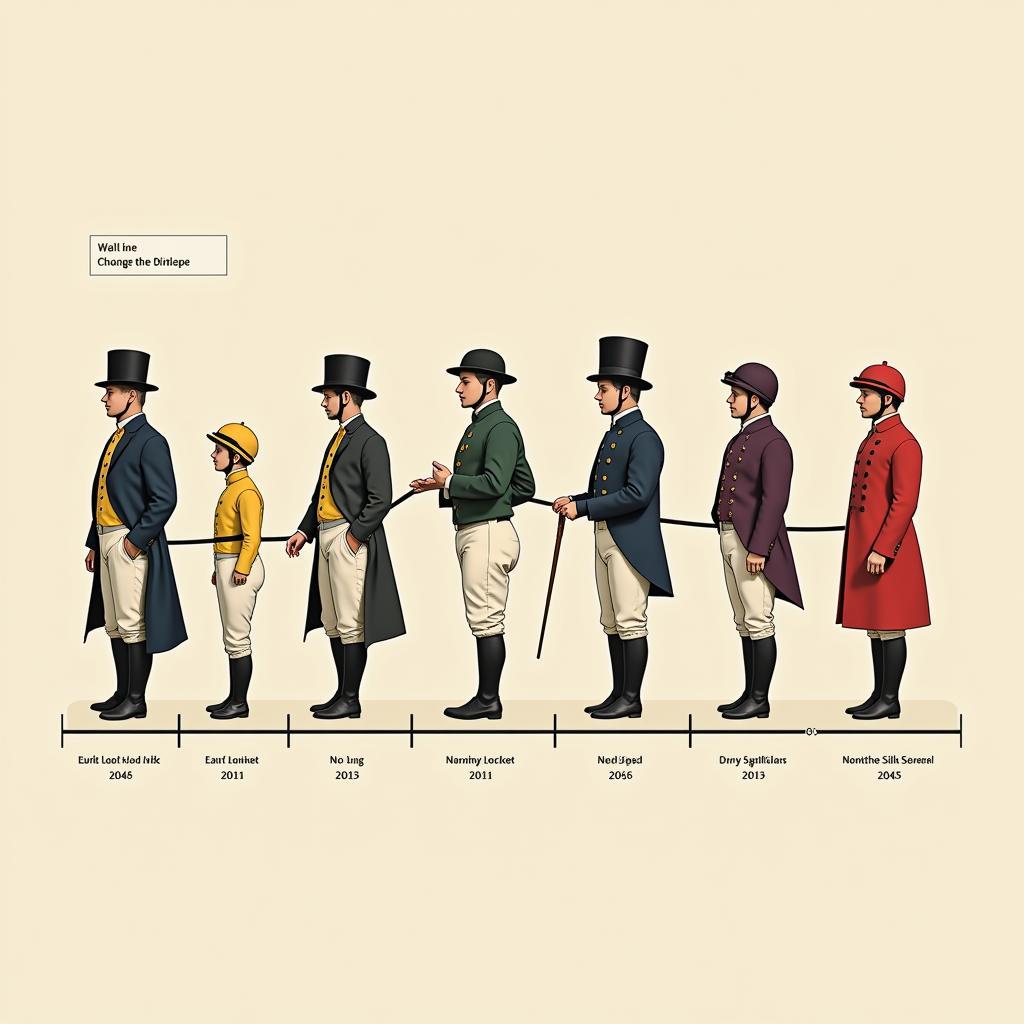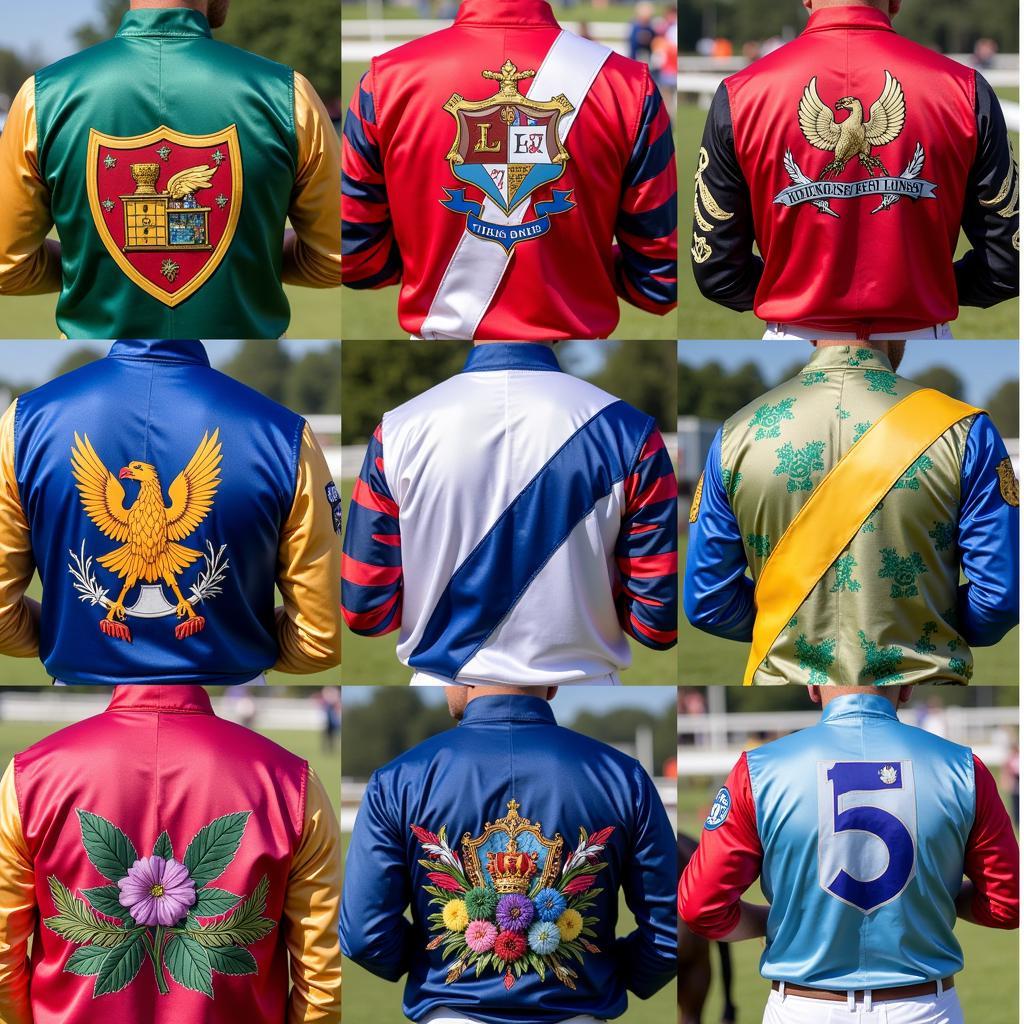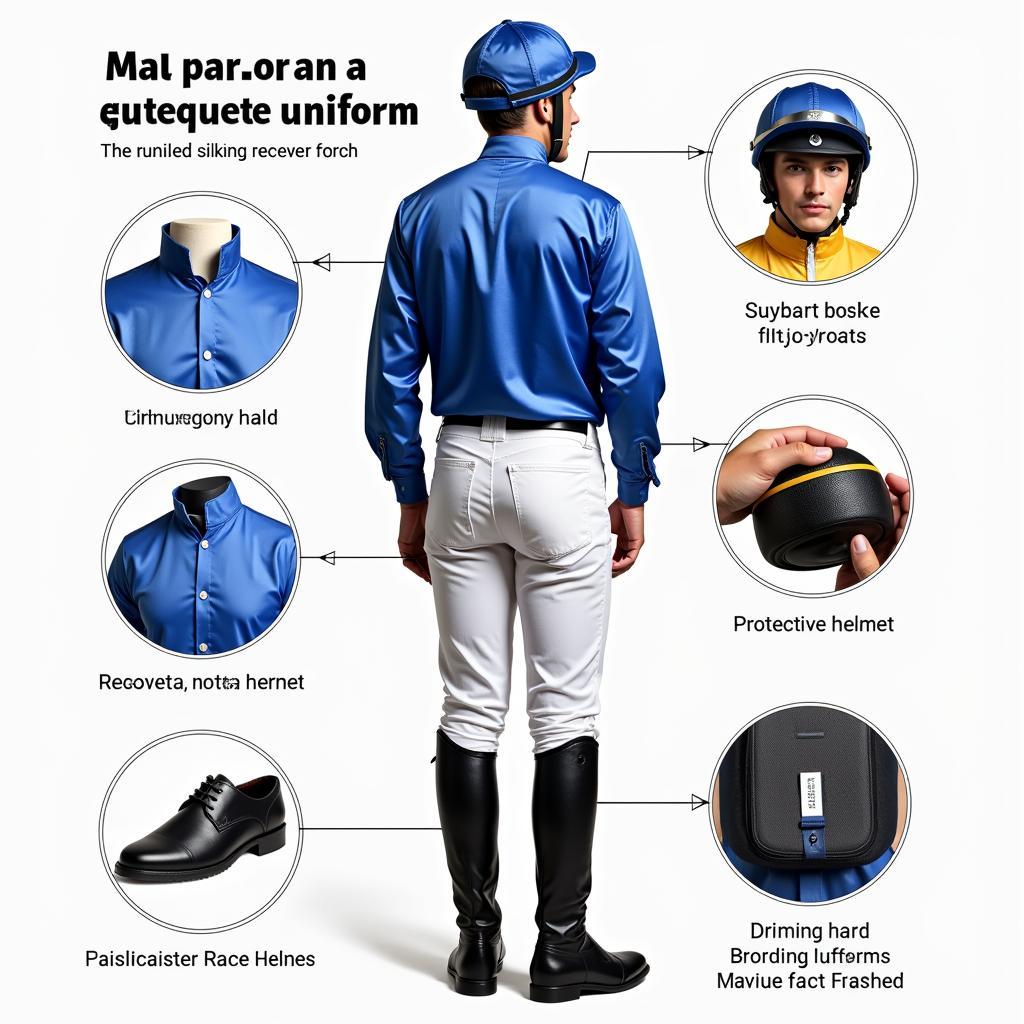Horse Jockey Uniforms are more than just colorful attire; they represent tradition, practicality, and a vital role in the sport of horse racing. From the silks to the helmet, each element serves a specific purpose, ensuring both the jockey’s safety and the smooth running of the race. This comprehensive guide will delve into the history, evolution, and intricacies of these unique uniforms, exploring the regulations, materials, and significance behind each component.
The Evolution of Horse Jockey Uniforms
Early horse racing lacked standardized attire. Jockeys often wore their everyday clothes, which could be cumbersome and unsafe. As the sport gained popularity and became more organized, the need for a distinct and practical uniform became evident. The first official uniforms appeared in the 18th century, influenced by the fashion of the time. These early uniforms were often made of heavy materials like wool and included long coats and top hats.
Over the years, horse jockey uniforms have evolved significantly. The long coats were replaced with lighter silks, designed for minimal wind resistance. The top hats gave way to helmets, prioritizing safety. This evolution reflects the increasing emphasis on speed and safety in horse racing.
 Evolution of Horse Jockey Uniforms
Evolution of Horse Jockey Uniforms
Decoding the Silks: The Jockey’s Signature
The most recognizable element of the horse jockey uniform is the silk jacket, also known simply as “silks” or “colors.” These brightly colored jackets are not just for show; they serve a crucial purpose. Each set of silks represents the horse’s owner, allowing spectators and officials to easily identify the competitors on the track.
The design and colors of the silks are registered with racing authorities, ensuring no two are alike. This system prevents confusion during races and adds to the pageantry of the sport. The silks often incorporate unique patterns, stripes, and emblems that reflect the owner’s stable or personal preferences.
 Horse Jockey Silks Designs and Patterns
Horse Jockey Silks Designs and Patterns
Beyond the Silks: Essential Components of the Uniform
While the silks are undoubtedly the most visually striking part of the uniform, other elements play a crucial role in the jockey’s performance and safety. These include:
- Breeches: Form-fitting breeches allow for maximum flexibility and movement in the saddle.
- Boots: Specifically designed riding boots provide ankle support and protection.
- Helmet: A mandatory safety feature, the helmet protects the jockey’s head in case of a fall.
- Safety Vest: A protective vest worn under the silks provides additional protection to the torso.
- Gloves: Gloves provide a secure grip on the reins.
What Are the Regulations for Horse Jockey Uniforms?
Horse racing authorities strictly regulate jockey uniforms to ensure fairness, safety, and uniformity across the sport. These regulations cover everything from the colors and design of the silks to the safety features of the helmet and vest. The rules vary slightly between different racing jurisdictions, but generally dictate specific requirements for each component of the uniform. For example, some racing jurisdictions have rules about the size and placement of logos on the silks, while others mandate specific safety standards for helmets.
Why Are Horse Jockey Uniforms Important?
Horse jockey uniforms are essential for several reasons:
- Identification: They allow for easy identification of horses and their owners during races.
- Safety: Helmets, safety vests, and boots are crucial for protecting jockeys.
- Tradition: The uniforms represent the long and rich history of horse racing.
- Professionalism: A standardized uniform contributes to the professional image of the sport.
Conclusion: The Significance of the Horse Jockey Uniform
From its humble beginnings to its current form, the horse jockey uniform has come a long way. More than just clothing, it’s a symbol of tradition, skill, and the thrilling sport of horse racing. Understanding the significance and functionality of each component provides a deeper appreciation for the role of the jockey and the rich tapestry of horse racing. So, the next time you watch a race, take a moment to appreciate the detail and history woven into each horse jockey uniform.
FAQ
-
What are the main components of a horse jockey uniform?
The main components include silks, breeches, boots, helmet, safety vest, and gloves. -
Why are the silks so important?
Silks identify the horse’s owner and add to the spectacle of the race. -
Who regulates horse jockey uniforms?
Various horse racing authorities regulate the uniforms in their respective jurisdictions. -
Are there safety requirements for the uniforms?
Yes, helmets and safety vests are mandatory for jockey safety. -
Where can I find more information about horse jockey uniforms?
You can find more information online and in books about horse racing history. -
What is the significance of the colors and patterns on the silks?
The colors and patterns are chosen by the horse’s owner and are registered to ensure uniqueness. -
How have horse jockey uniforms evolved over time?
They have evolved from heavy wool coats and top hats to lightweight silks and protective helmets.
 Modern Horse Jockey Uniform
Modern Horse Jockey Uniform
Do you have other questions about horse care or pet care in general? Check out our other articles on Justus Horses USA for more valuable insights and tips!
Need assistance with your equestrian needs? Contact us at Phone: 0772127271, Email: [email protected] or visit us at QGM2+WX2, Vị Trung, Vị Thuỷ, Hậu Giang, Việt Nam. We have a 24/7 customer service team ready to help.